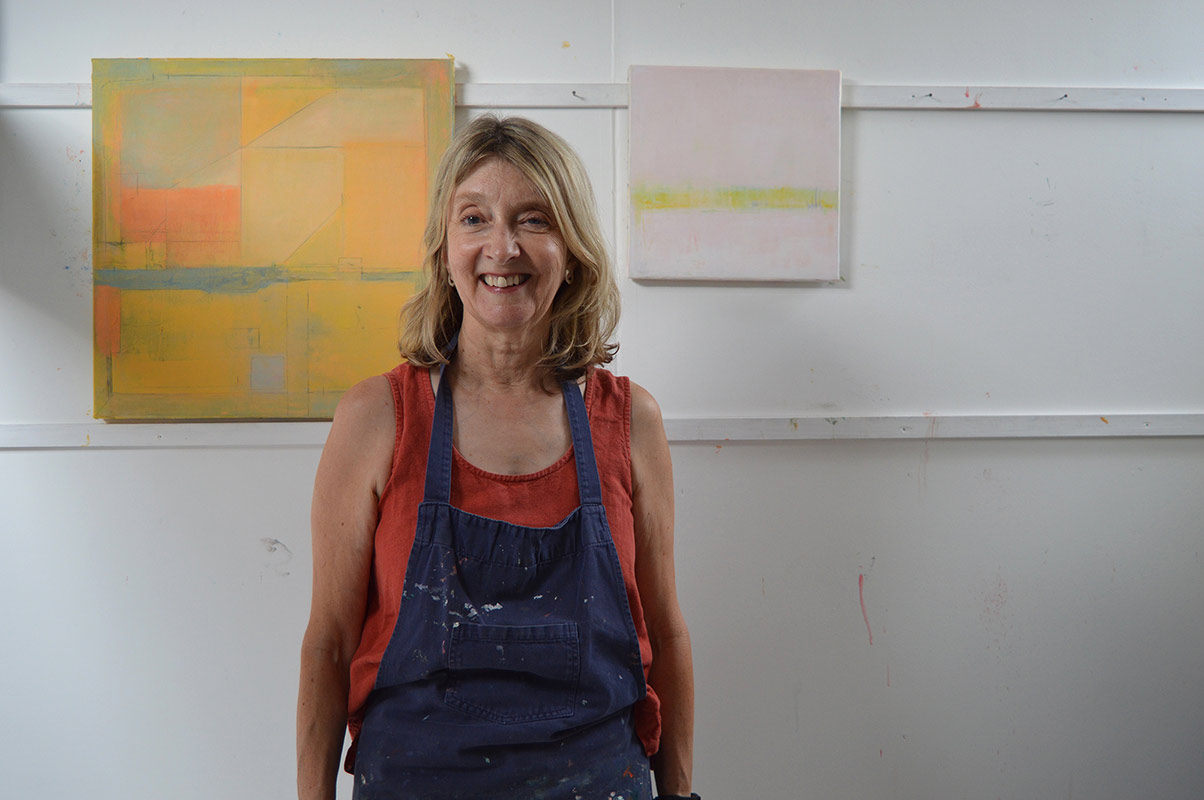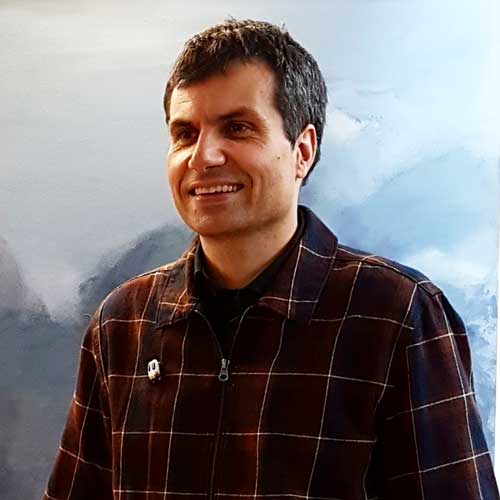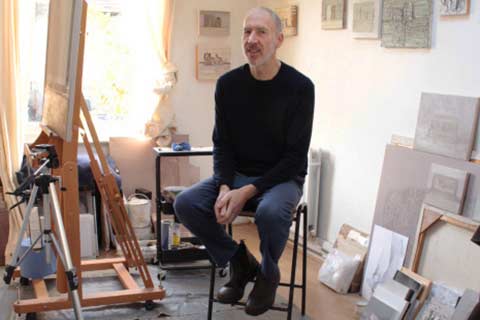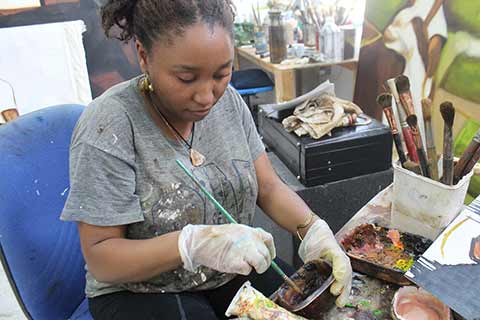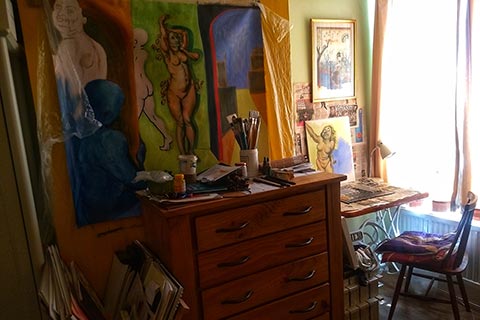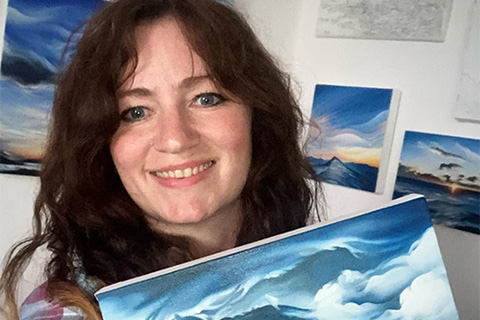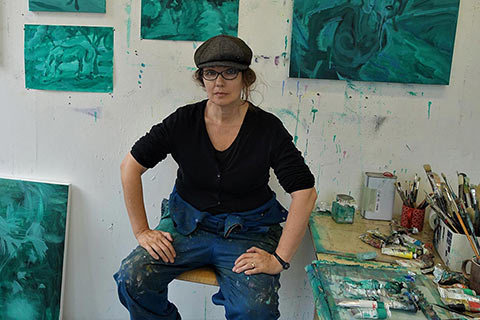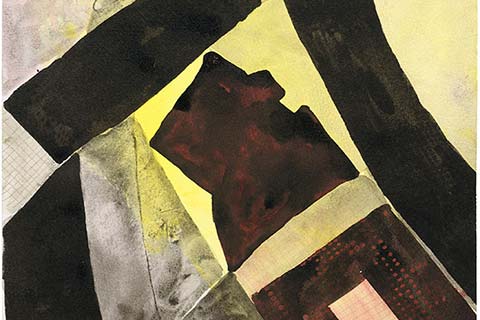Ruth Philo: Artist of the Month
Artist of the Month April 2023:
Ruth Philo, selected and interviewed by Paul Newman for CBP.
Ruth’s paintings explore abstraction, through colour, light and surface, often emerging from encounters with place and walking. Her work combines elements of internal and external worlds to convey a sensory experience. The scale is often intimate, the surface of the paintings pared down, with just enough in them, to communicate on both a physical and an emotional level.
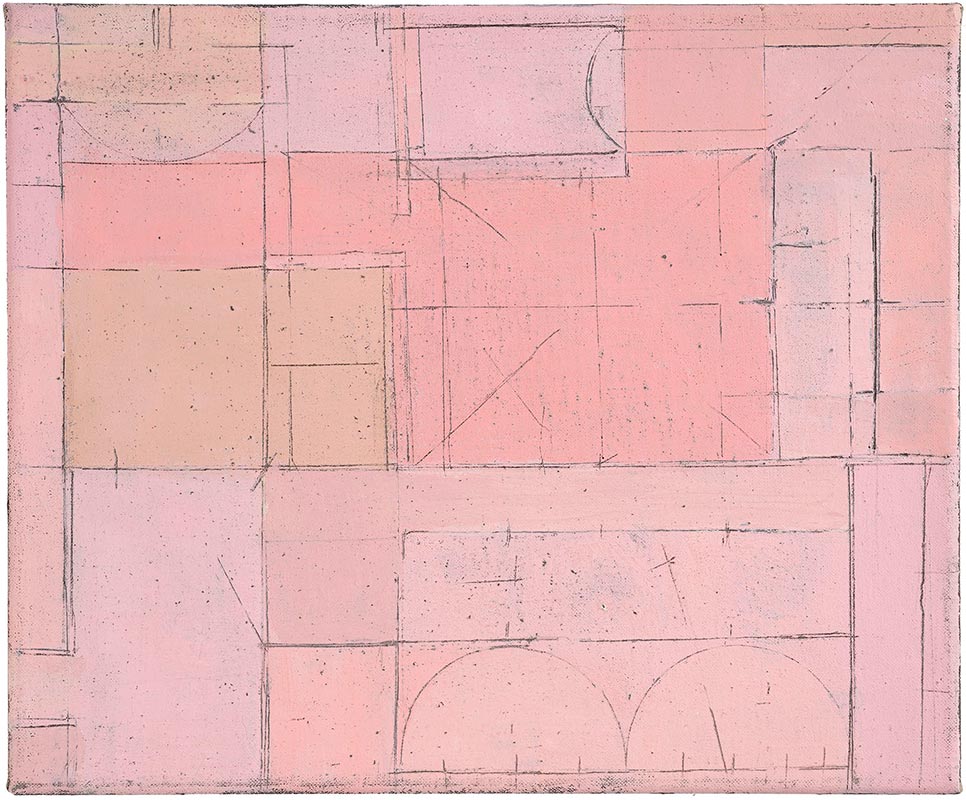
CBP: The line feels significant in your painting, as a mark inscribed into paint, and as the division of space. The line sometimes introduces its own element of colour in relation to the divisions in the ground. Can you talk about the exploration of the line in your painting?
RP: Yes for a while I have been working with lines inscribed through the paint to reveal the graphite ground beneath. Sometimes I use it formally to divide up areas on the canvas and I also use it as a way of marking time; time might be a subjective element in the painting, as in the Waiting Room paintings or it might be marking time in the making process. Much of this is intuitive and unconscious, rather than planned, this way I connect with the internal, which is an important element in my work. The marks perhaps connect to the haptic elements of making paintings.
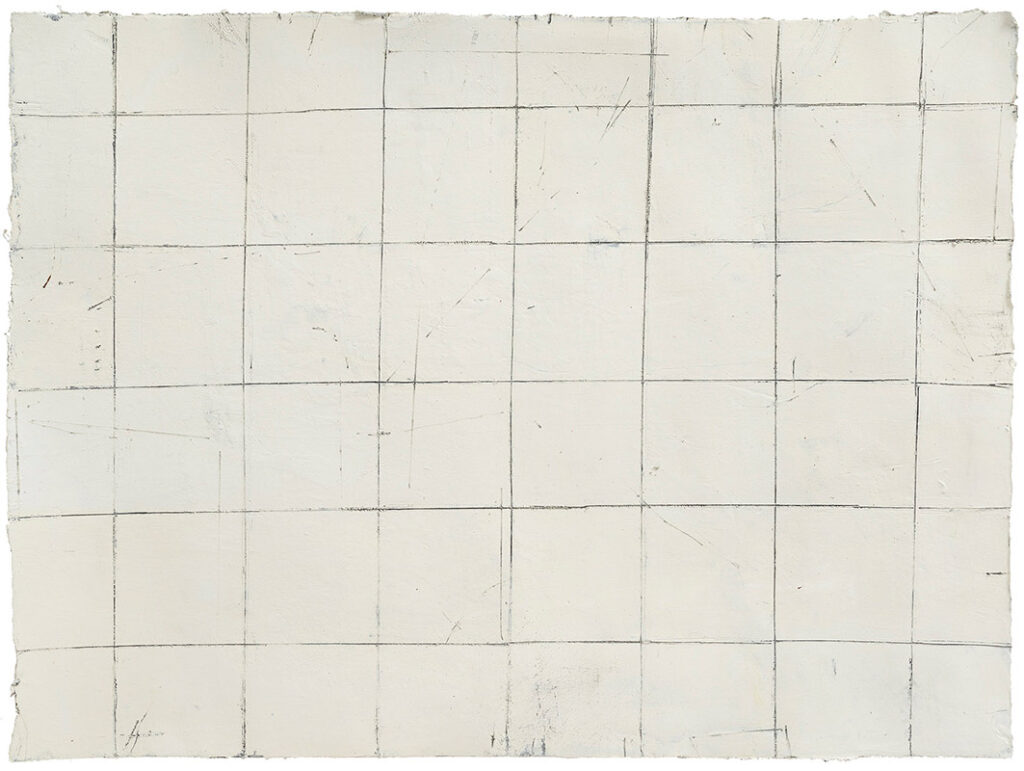
CBP: Drawing is also a key element of your painting with the use of graphite, both as a reveal of the history of process and to redefine the lines at later stages. Do you also work from drawings or preparatory studies?
RP: Whilst I don’t draw traditionally with a pencil, I often use a graphite ground and build up layers of paint on top, drawing or scoring through with a metal point to reveal the ground. This is done alla prima, whilst the paint is wet so the process dictates nothing very accurate can be done, which is freeing and allows for chance happenings. The layers of paint are built up and sanded down and the strata become more obvious through the incised line. I am interested in the palimpsest nature of painting and the role the process plays. I might make a series of quick colour notes or sketches, a kind of limbering up of ideas, though I don’t work directly from these. Walking plays a role in my practice, that in itself is a kind of drawing or mapping, getting to know the territory.
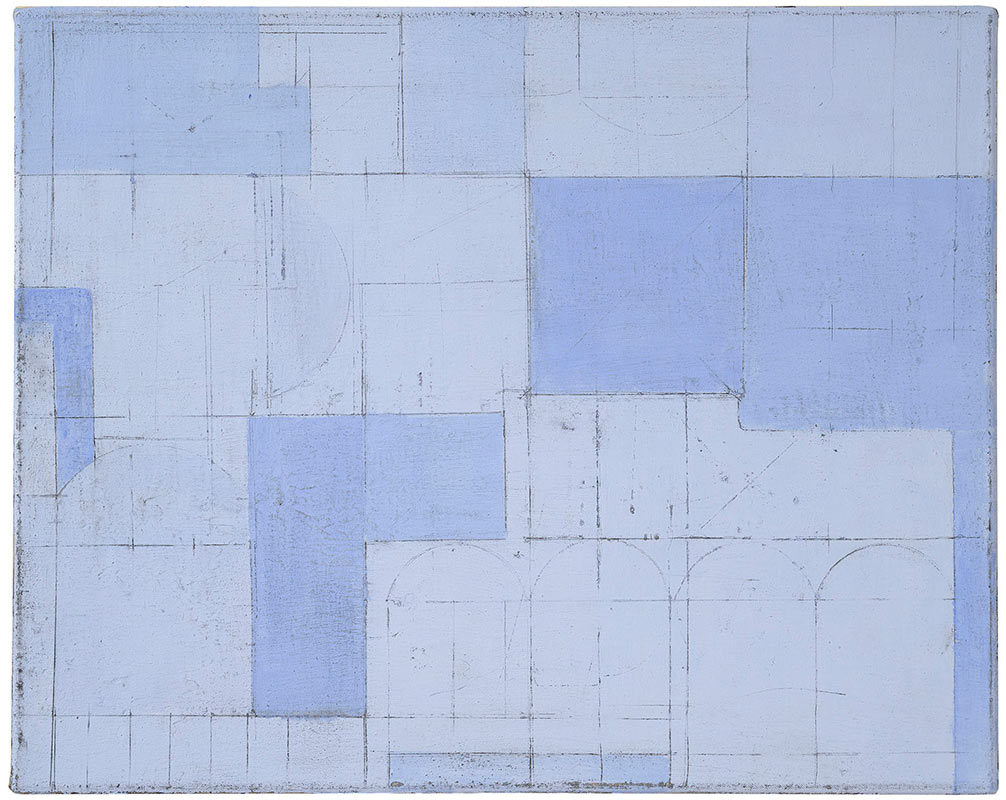
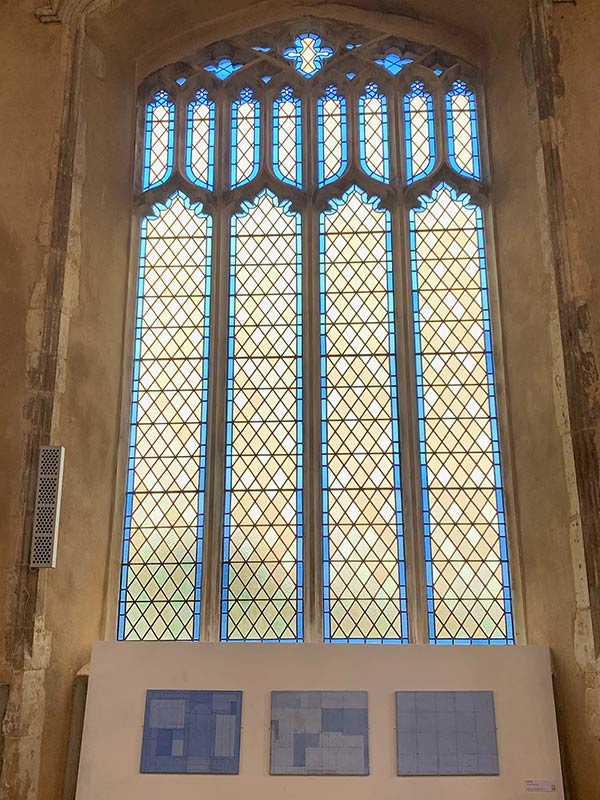
CBP: You work in series; ‘The Paths We Take’, feels like an index of moving through a landscape, in connection with painters like Simon Carter and Day Bowman, where as ‘Lido’ the structure and geometry is more systematic. Can you talk a little of the range of compositional approaches in your series of works.
RP: I like working in series and the interplay that paintings can have with each other in the studio. My practice involves walking – walking as thinking, feeling and a kind of mapping. I might start out with an idea of exploring certain colours or arrangements of space on the canvas but as soon as I start painting the process takes over. Paintings come about through a mixture of thoughts that are external and feelings that relate to internal states, whilst I’m painting I’m unaware of where a particular painting may go, but at some point after it’s finished it usually reveals itself to me, often through talking with someone who is viewing it. There is a concept by psychoanalyst Christopher Bollas of the unthought known that he refers to in his book The Shadow of the Object about those experiences that we somehow feel yet have not been able to bring to mind to think about – I feel these often feature in my paintings and allow me to get in touch with unconscious material through the painting process. Titles come when the paintings are finished and are usually lines from tunes that I’ve been listening to, though not necessarily whilst I paint, but they open up this element of painting.
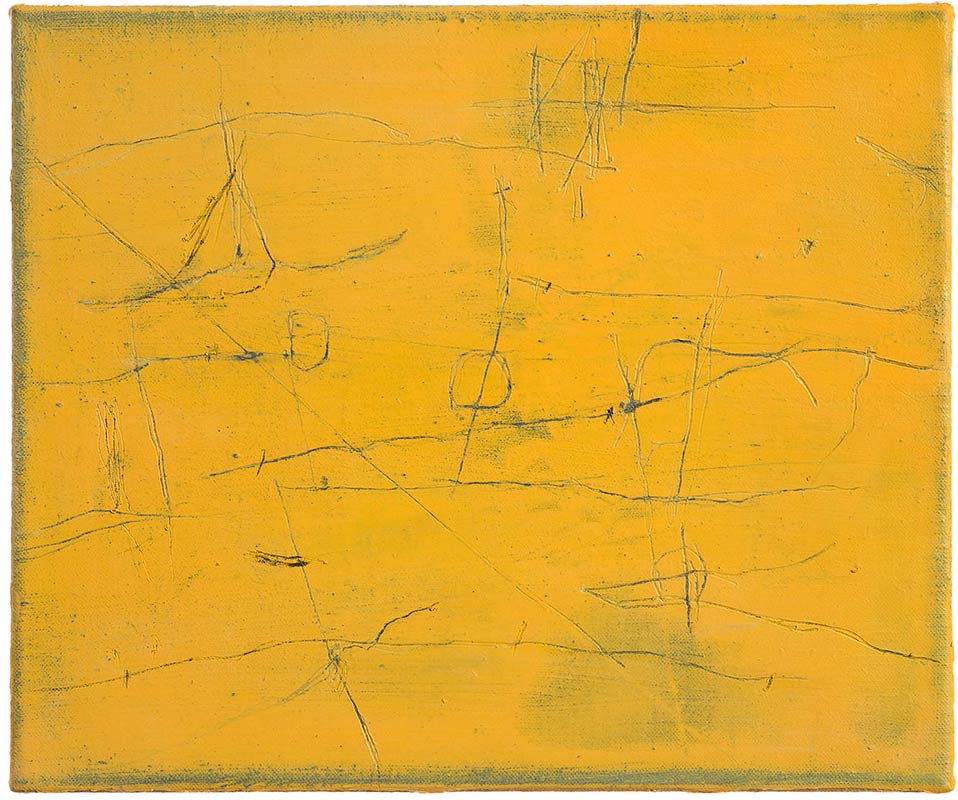
CBP: The surface of your paintings, are sometimes inspired by architectural facades and the colour in historical buildings. Can you discuss the influence of these surfaces and how they are transcribed through your painting?
RP: My first job was an archeological assistant and before that I studied for a BA in History of Art that included a large component of architectural history, so I’ve long been fascinated by the material of habitation, buildings, especially dilapidated ones, facades, ground plans, colour pigments and decoration. These elements are material traces of history and people that resonate with me. Much of my work develops through walking and getting to know a landscape or territory, its not that I am trying to record what I see, but elements stay in my memory almost as a bodily experience and become a source, my paintings then embody those experiences of place.
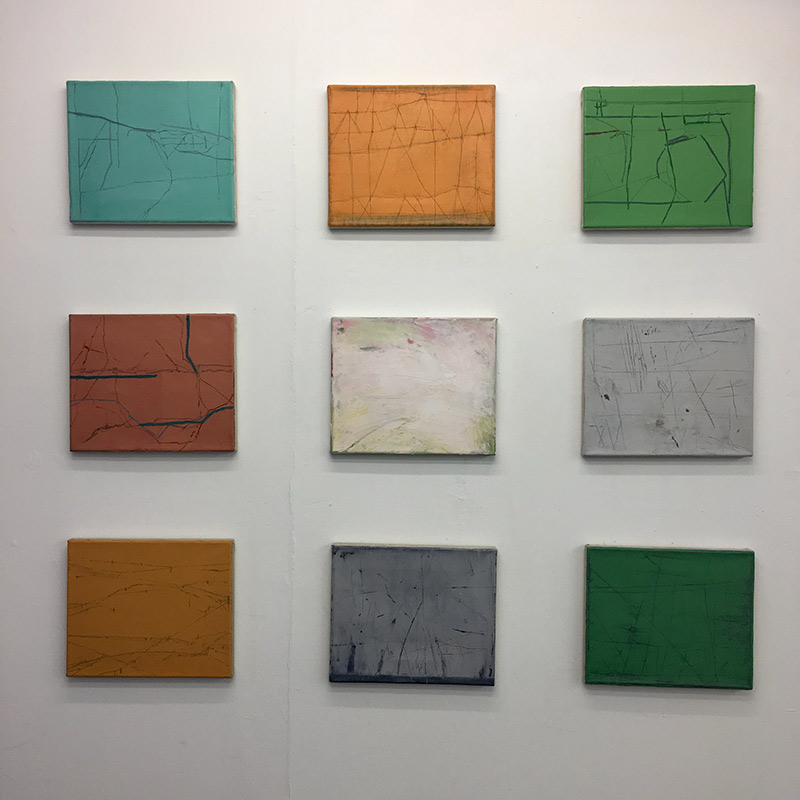
CBP: Recent painting ‘Phase Magenta’ alludes to a translation of domestic surfaces, (which you explored more overtly in the ‘Lost and Found’ series). Can you talk about this work?
RP: Often my work is more pared down and abstracted, but in this painting you’re right, I’d connected with an architectural element in some tiling in front of a derelict building in Barriero, Portugal and wanted to use the energy of that repetition and pattern, it also had a connection with the music by Overmono that I’d been listening to and a sense of urgency. The colour is largely caput mortuum, some of which I dug in the post industrial area there whilst on a residency at PADA, November 2022. It is a by-product of the sulphuric acid industry there and lies waste in the landscape. I ground it into pigment and made paint.
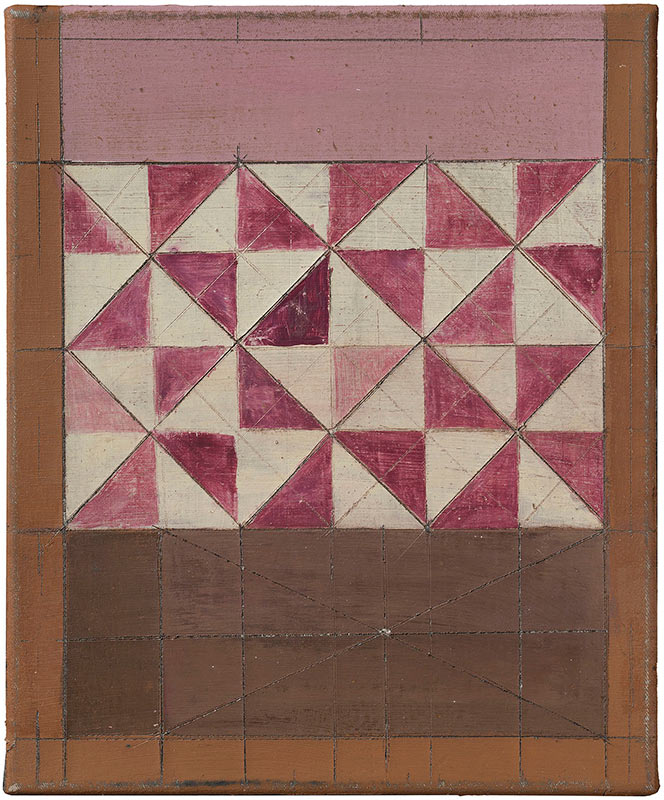
CBP: You are about to launch ‘Making Ground’ a project supported, supported an ACE DYCP grant – looking into colour as material and also its immaterial or metaphysical connections. Can you introduce the background to this project?
RP: I’ve always been fascinated by colour since a young child, where it comes from, its history, how it’s made, why painters choose a certain palette and associations of memory and feeling. This project has given me time and financial support to investigate it both as a material and also look into its immaterial or metaphysical qualities. Part of the project has been about me developing my work, exploring colour in relation to site and territory, undertaking the residency with Sluice and PADA and showing the work at the Lisbon Art Fair. I’m currently doing another short residency at Cuckoo Farm Studios, Colchester where I used to have a studio, to take this work further in terms of scale. Another element of the project has been visiting artists in their studios to talk with them about the power of colour in their work.
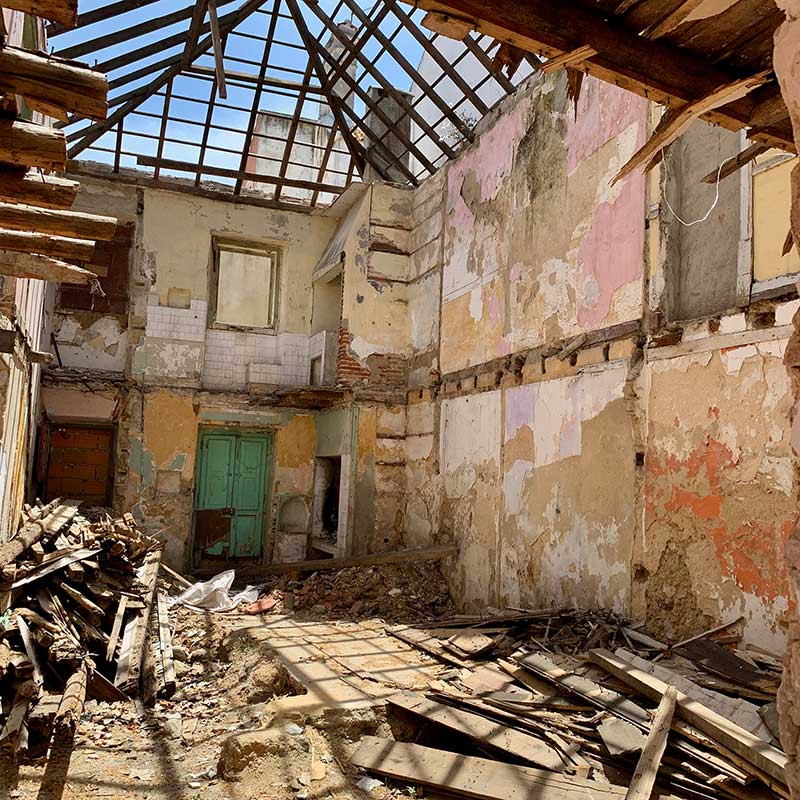
CBP: Making Ground will present a series of interviews, ‘A Geography of Colour’ starting with this April Newsletter and the first artist is Sarah Needham who makes paint from locations connected with the research topic she is working on. I assume the interviews will feature a broad range of approaches to making and using colour?
RP: The project allowed time and money to interview 8 artists. A few more have come on board since then so I think there will be 14 interviews altogether, going out at the beginning of each month from this April. Largely they are artists whose interest is in abstraction as I’m interested in the power of colour, not hindered by reference, in abstract painting. I’ve also been researching colour as memory, its symbolic power for some and its affects on our physiology – for example red has the power to make ones pupil’s dilate and heart beat faster! It has been fascinating to do this and I hope that other painters will enjoy the unfolding of the series. I’m imagining they might be interesting to listen to whilst them in the studio. I’m grateful to Contemporary British Painting for including them in their newsletter and helping me to publicise them to an audience of painters and people who appreciate painting.
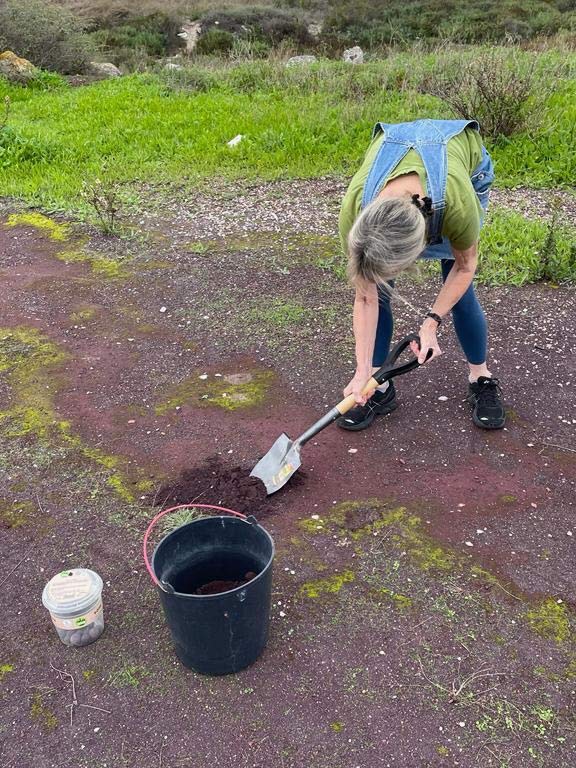
CBP: Your own paintings are vibrant though predominantly monochrome or closely ranging colour schemes. Can you discuss the intuitive and technical approaches to colour in your work?
RP: Often there is more in my paintings as they develop, but gradually I pare down and generally leave only what I think is absolutely necessary. I like colour to be quite pure and direct and think of the paintings as atmospheres, something that one can contemplate and stay with, so colour and surface are the key.
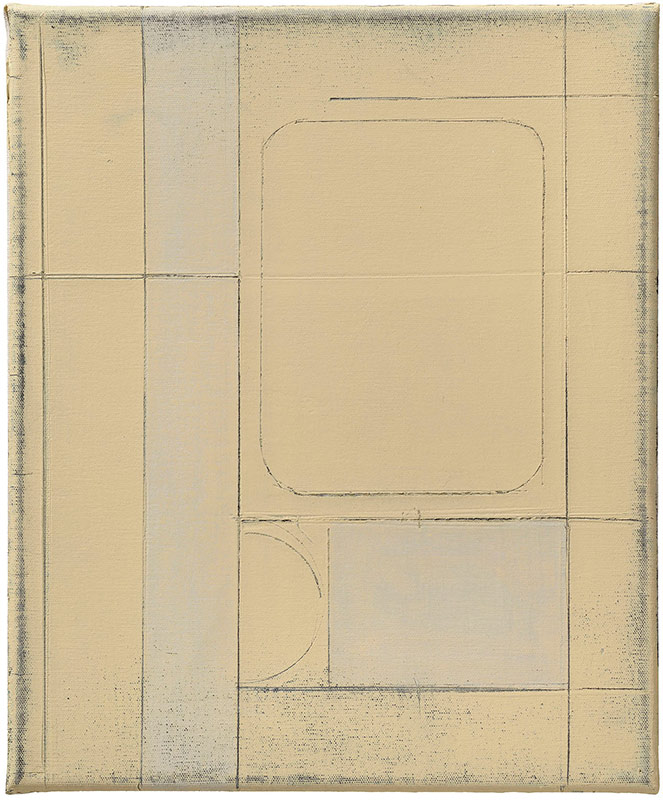
Terriitorio Bege, acrylic and graphite on canvas, 30cm x 25cm, 2022.
Photo Douglass Atfield.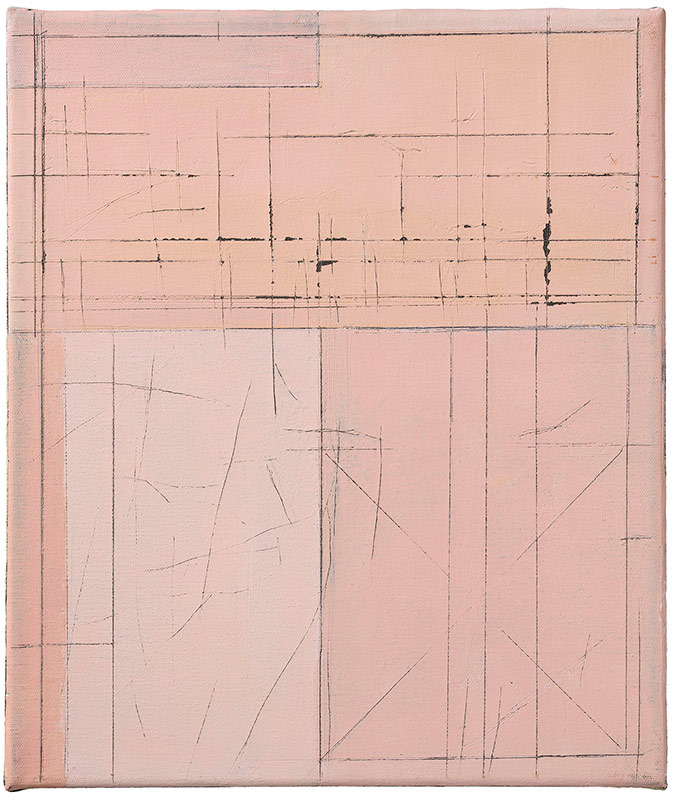
Terriitorio Rosa, acrylic & graphite on canvas, 30x25cm, 2022.
Photo douglass Atfield.
CBP: You also launched Pasture Project Space with your partner sound artist Stuart Bowditch in Sudbury, Suffolk running short research residencies in the space where you work and live. Can you introduce this project and is it separate from your own painting and related research?
RP: The idea behind Pasture Project Space was to offer artists a short time away for research, reflection, testing things out or just to think. Stuart and I both value meeting other creatives and the conversations we can have together. We enjoy opening up our live-work place, cooking and doing the daily things to support someone so that they can focus on their practice without any distractions. We also put people in touch with others who might prove useful to their research and help them access the landscape. We live on the edge of Sudbury, Suffolk, a landscape full of painting history – Gainsborough, Constable, John Nash, Cedric Morris and the East Anglian School of Painting as well as the beauty of the water meadows and river – there is a kayak and bike for people to use to explore this. So far we have been doing test residencies which are free but unpaid and now hope to find some funding so that we could support artists to come.
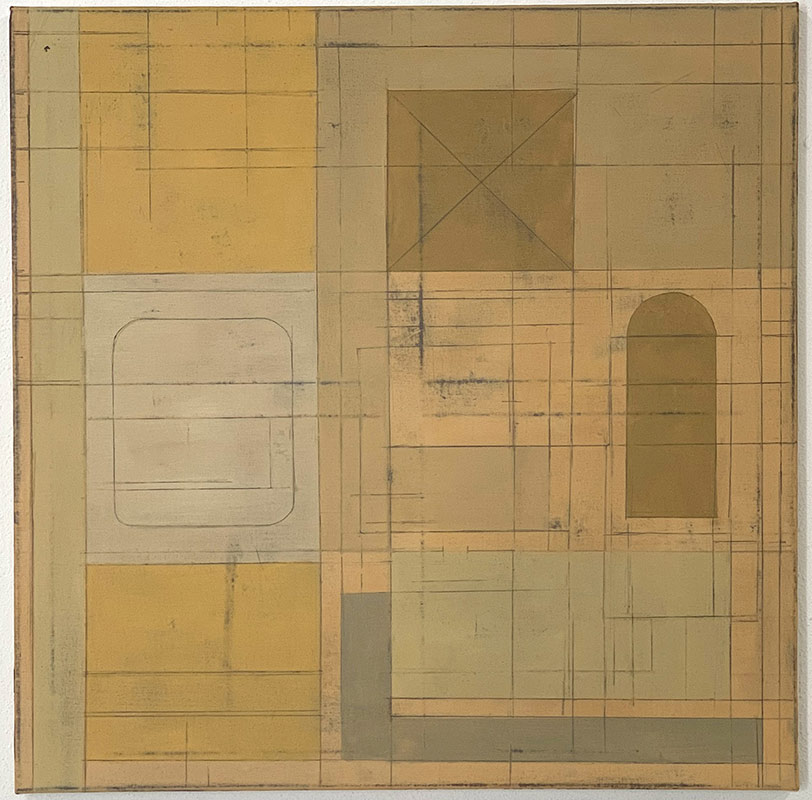
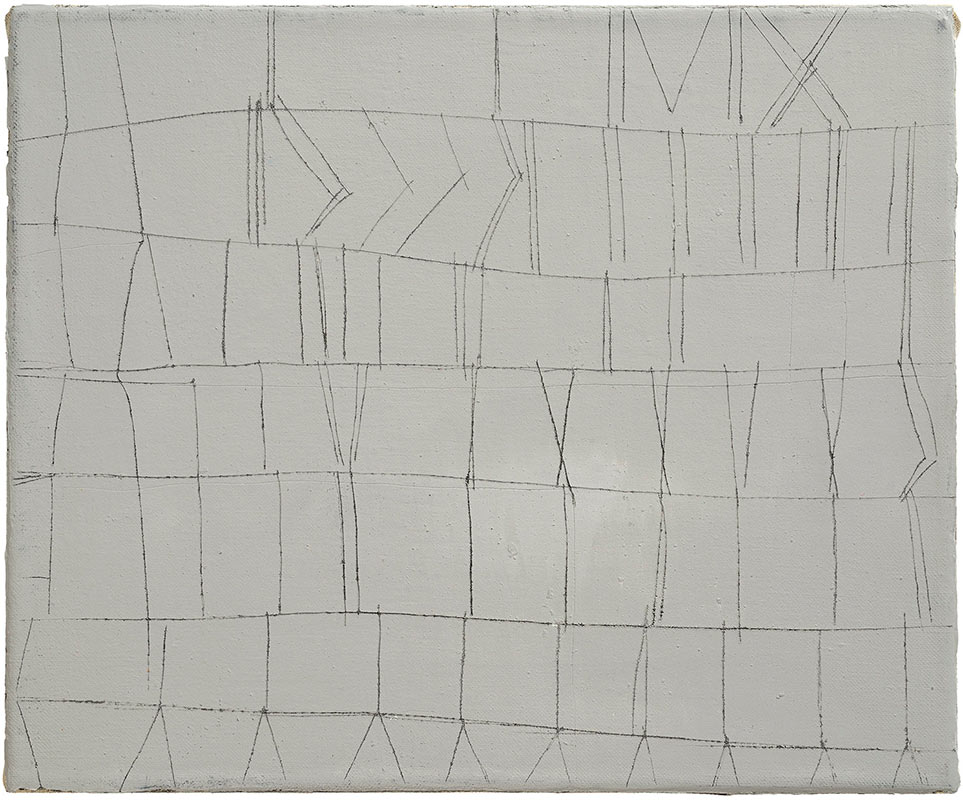
Ruth Philo regularly exhibits in the UK and abroad, based in Sudbury, Suffolk. Ruth has an MA Fine Art, Norwich University of the Arts and BA History of Art, University of Warwick, she is a member of Contemporary British Painting and also curates shows. Her work has been selected for the Jerwood Drawing Prize and the Royal Academy Summer Exhibition, British Council exhibitions in Poland and Romania as well as Contemporary British Painting shows in China and the US. She has been awarded ACE DYCP and project grants and a British Council Artists International Development Fund Travel Grant for work in China. Her work features in collections in the UK, Ireland, USA, Switzerland and China.
Recent exhibitions include:
2023 With(in) and With(out) Borders & Boundaries, The Milkfactory, Hertogenbosch, The Netherlands. This Year’s Model, Studio 1.1, London.
2022 Animal Vegetable Mineral, The Art Station, Saxmundham. Territory Expo, Sluice + PADA, Lisbon Art Fair, Lisbon, Portugal. Women in Colour: East Anglian Women Artists, Cobbold & Judd, Stoke by Nayland. Paint Edgy, Contemporary British Painting, The Ropewalk, Barton on Humber. A Generous Space 2, Artists Support Pledge, New Art Gallery Walsall. Vitalistic Fantasies, Elysium Gallery, Swansea. M2 Gallery Artists: 2, ASC Gallery, London. The Art of Grieving, St Albans Museum, St Albans.
A Geography of Colour. Painters talking colour with painter Ruth Philo



